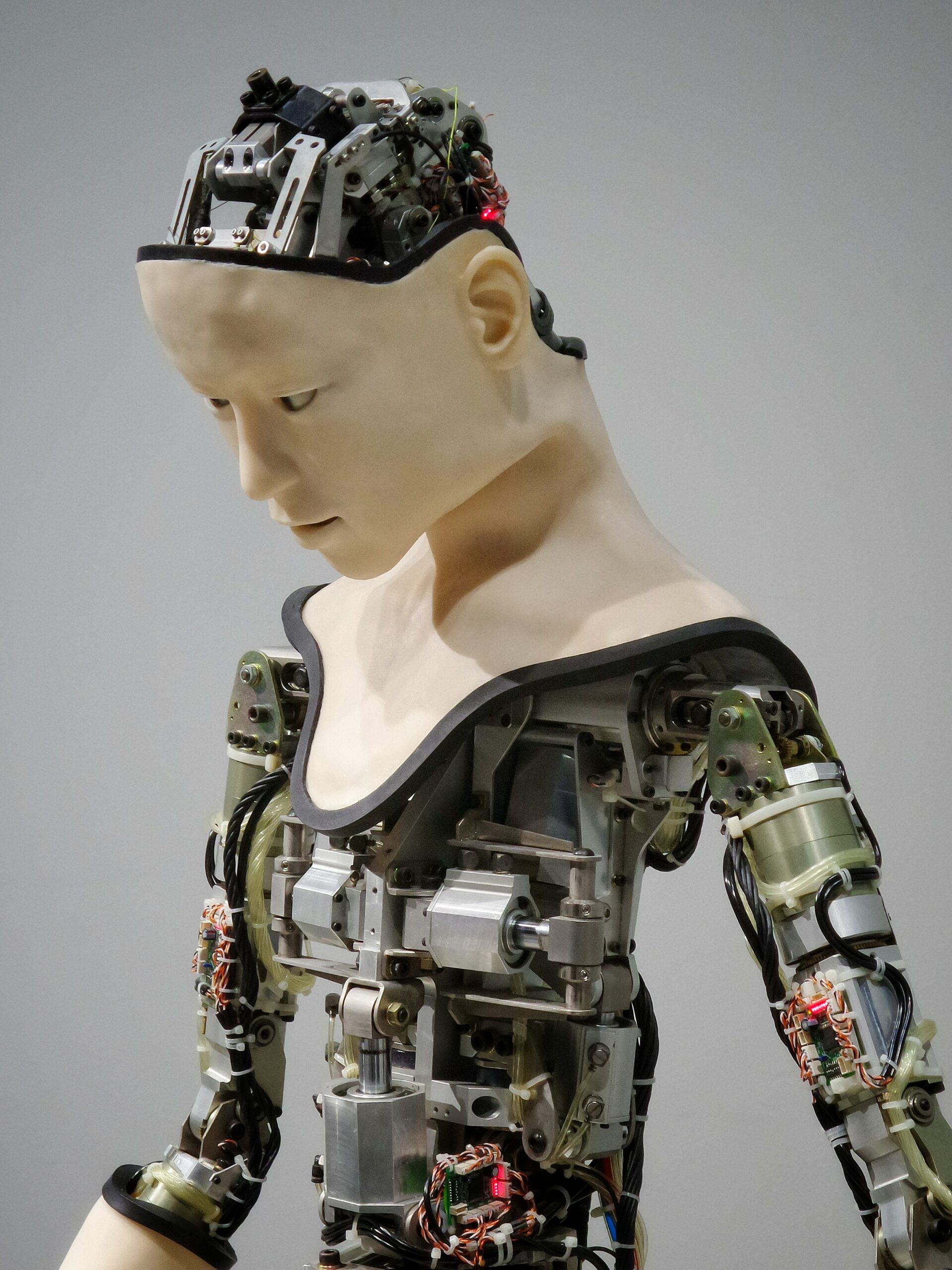To start this essay, I click the link to ChatGPT, prepared to type in my prompt: Write an essay on how to use ChatGPT in writing classrooms. But I cannot enter ChatGPT’s interface. The server is at capacity. Too many people. An overcrowded virtual space. 6:14 on a Wednesday morning.
I guess I’ll have to write this all by myself.
It’s a good thing, too, since ChatGPT does not actually write essays. Sure, it offers information, but writing? No. Neither “writing skills” nor rhetorical suave can be detected in anything produced by this AI. This truth, that GPT does not actually write, is how we might situate GPT’s presence in classrooms across the globe. Rather than writing essays, AI offers students a useful guide—a glimpse of what not to do with their own writing.
Though some scholars may have rolled their eyes at AI in early 2022, by the end of January 2023, conversations about ChatGPT dominate academic landscapes. Should universities forbid downloading the program? Should instructors embrace the AI in their classrooms? Steven Marche’s infamous Atlantic article “The College Essay Is Dead” initiated these conversations concerning the nuances involved in student writing, writing assessment strategies, and curriculum development.
Though some scholars may have rolled their eyes at AI in early 2022, by the end of January 2023, conversations about ChatGPT dominate academic landscapes.
When Google first entered the public domain, the pressure to prevent plagiarism in academic spaces increased tenfold. Now (one hopes), educators understand that regardless of what they are telling students in the classroom, students will go to Google. To combat this, some instructors utilize Google searches during class; other educators strictly forbid the use of public search engines, requiring academic databases. For me, ChatGPT serves as nothing more than a streamlined Google.
ChatGPT produces accessible information in one place, a rather compelling trait for the sound-byte generation. Instead of going to Google to access Wikipedia, YouTube, a blog, and maybe a few articles published by Psychology Today, students ask ChatGPT a question to seek information assembled in neatly formulated paragraphs that use transitional statements like “additionally” and “in conclusion,” those phrases students have been told are valuable to academic writing. In a sense, this streamlined service is a benefit—time is our most valuable resource.
Still, more significant than the overuse of conjunctive adverbs, what ChatGPT is unable to do with all the information it streamlines into one space is explain where, exactly, that information came from. You know, that thing we academics call “citing our work.” Because of its lack of citation skills within its writing, ChatGPT opens up conversations about copyright and fair trade laws, and works as an intriguing tool when considering issues of open access information and educational privileges. For example, if we were to assess writing produced from ChatGPT, the first and most troublesome question becomes: where did this information come from? We can use the writing to make students wonder about what type of information we should be able to access for free, and how should that information look. What are the repercussions when a global citizenship duplicates work from scientific research to artistic production—without acknowledging the creator?
ChatGPT, like any other AI, calibrates information from across digital spaces in order to summarize that information; GPT’s cadence is what we might describe as neutral, it aims neither to confuse nor to challenge. Because of this, language’s rhythm takes backstage. For disinterested students, the academic drivel produced by ChatGPT may read as alluring, educated, maybe even impressive. For seasoned writers and educators, the lack of short sentences serves an immediate detector of artificial rhetoric.
Because we are human . . . the humanities will survive.
The profound plays in parataxis. In the crystalline. The precise. Yes, parataxis offers a beat to keep the prose going, but varying sentence structure does more than that just provide rhythm. It’s aesthetically pleasing. We look at the page and see variety. Spaces. Breaths (the human voice!). A variety of syntax is the closest thing prose has to the poetic line.
We might examine work produced by ChatGPT and specifically ask students to consider and revise the syntax. We might ask students to rewrite paragraphs, creating moments of parataxis throughout. Introducing the rhetorical device of rearrangement, we might also ask students to rearrange words so that, to paraphrase Coleridge, they learn the initial stages of putting the best words in the best order. Composition instructors might even encourage codemeshing, asking students to revise not just the syntax, but to reconsider aspects of tone and discourse, which, for AI, lean towards more professional rhetoric than vernacular or slang.
The lack of syntactical variety in the rhetoric produced by AI proves to be a useful starting point for asking students to consider language’s malleability. The first rule of writing is that writing is rewriting, right? There are many other rhetorical strategies we might apply to ChatGPT’s writing. Some of these strategies carry similarities to workshop strategies found in creative writing classrooms. Others ask students to apply basic rhetorical strategies to the AI’s voice. We might ask students to:
- Activate a “verb hunt” for forms of “to be” and allow only one conjugation of the verb throughout the piece.
- Encourage students to play with litany or anaphora, perhaps using repetition as a replacement for “however,” “therefore,” or “additionally.”
- Tell students to replace any sentence with a question.
- Incorporate the craft of blackout poetry directly onto the AI generated work, a process which helps students with concision as they narrow down the words with each thick, black line.
- Ask students to add internal rhyme within the generated syntax. Because the sounds of language mean very little to AI, we might incorporate our poetic senses by focusing on sentences that can benefit from deeper rhythmic development.
- Ask students to write a metaphor or simile about the AI generated essay. Impose on this automatic generated language some imagery. For example: this essay is a brain stuck on autopilot.
In any case, empower students by ensuring them that whatever AI has written, they can write better. Expose the flaws in the program’s rhetoric to generate confidence and competence in human voice.
There’s danger to the “if you can’t beat them, join them” mentality. Our classrooms will still be successful if we exclude all AIs. But, if we’re going to confront the proverbial elephant, we might do it to our benefit.
In July of 2013, Rosanna Warren’s “The Decline of the Humanities—and Civilization” reasonably suggested that because we are human—because we enjoy music or narrative or even a good old true crime television series—the humanities will survive. The crisis of ChatGPT only proves further why the practice of creative writing plays an essential role in any educational system. It’s not information, after all, but how we deliver information, that influences learning.
I am starting to wonder how ChatGPT would end a piece that reflects on its own pedagogical purposefulness, so I try to access the server again at 7:37 a.m., one hour or so after I first began writing. The queue has lessened. I’m in. Success.
I plug in my prompt: Write an essay on how to use ChatGPT in writing classrooms. In less than 50 seconds, the program has articulated the purpose for its existence in higher education, and the answer is exactly as expected: neutral, indeterminate. ChatGPT can do these things, but it might not, either.
ChatGPT can be a valuable tool in the classroom for a variety of purposes. One potential use is as a writing assistant. Students can input their written work into ChatGPT and receive suggestions for grammar, vocabulary, and sentence structure. This can help students improve their writing skills and become more confident in their abilities.
Another potential use for ChatGPT in the classroom is as a research assistant. Students can input their research topics into the model and receive a list of relevant sources and information. This can save students time and effort in their research, and also help them to develop their critical thinking skills by evaluating the credibility and relevancy of sources.
ChatGPT can also be used as a tool for language learning. By inputting phrases and sentences in a foreign language, students can receive translations and usage examples. This can help students to improve their language skills and gain a deeper understanding of the language.
However, it is important to note that ChatGPT is a machine learning model and may not always produce accurate or appropriate information. Teachers and students should use critical thinking and fact-checking when using the model. Additionally, ChatGPT can be used as a supplement but not as replacement of human teachers and peer review.
In conclusion, ChatGPT has the potential to be a valuable tool in the classroom for writing assistance, research, and language learning. However, it should be used in conjunction with other resources and with a critical eye. With proper implementation, ChatGPT can help students to improve their skills and become more confident learners.
—Sourced from ChatGPT on January 25, 2023
More on ChatGPT in the classroom:
Read “English 110 Versus ChatGPT: Finding a Middle Ground with AI Usage in the Composition Classroom” by India Choquette.
Born and raised in Brooklyn, New York, Abriana Jetté is a poet, essayist, editor, and educator. Her writing has been featured in Best New Poets, Poetry New Zealand, River Teeth, The Moth, Plume, and other places. She teaches various writing courses for Kean University, where she also leads the Common Read program.




